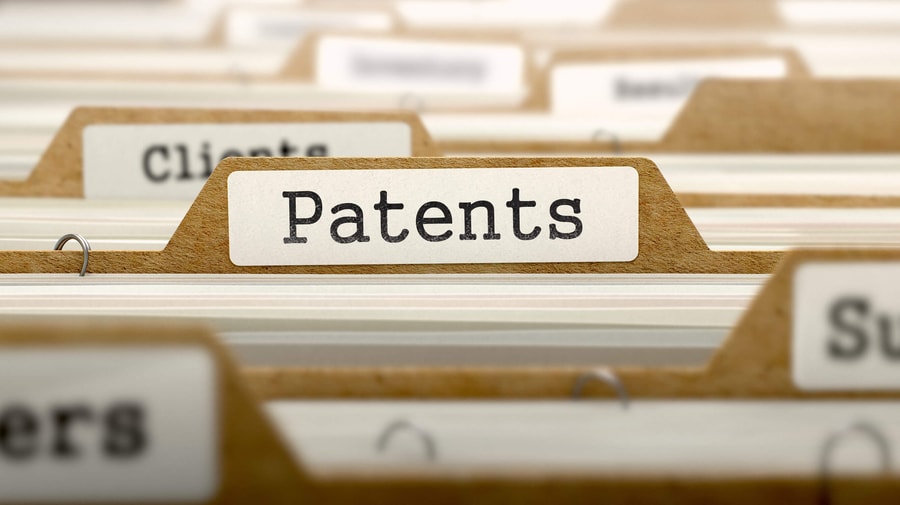A business can own intellectual property rights via copyright, a trademark, a patent or a design. In each case, the protection is available only for something that has actually been created – not simply for an idea.
The only intellectual property that a business can own automatically, without any application or registration process, relates to the work completed by directly-employed staff in the course of their job. This includes the copyright of creative or artistic works and the design right of the external shapes and configurations of designed objects.
Branding identities such as product names and logos can be registered as trademarks, subject to a fee and application process. A trademark can protect the use of unique combinations of words, sounds, logo designs and colours. However, it can’t be descriptive of goods or services, nor can it be misleading, offensive or too common.
Inventions and products, such as tools, machines and medicines, can be protected by a patent. The application is often lengthy (years rather than months), but applies for twenty years once granted. Patents can be granted to businesses as well as individuals, as long at the invention is genuinely new, involves some form of intellectually inventive step, and is capable of industrial application.
Finally, registering a design can protect the external appearance, physical shape, configuration and decoration of a created object for up to 25 years. Unlike a patent, this doesn’t cover functionality.
For all these types of intellectual property, a business can also acquire rights by contract, purchase or licensing agreement from the current rights holder.

Patents
A patent is an exclusive set of rights that are provided to an inventor or assignee for a predefined period of time in return for the public disclosure of an invention. They’re a form of intellectual property protection and can help protect the holder from unauthorised copying or theft of your inventions.
There are several places to search for existing patents, depending on whether they’re held worldwide or in the UK alone.
To check for patents registered worldwide, Espacenet is a good place to look. It includes UK patents and has information on patent owners, filed documents and also in which countries the patent is valid.
To look for UK patents, the Intellectual Property Office has several channels including Ipsum and the patent publication service. They also have services to investigate Green Channel Patent applications as well as patents that can be licensed and also patents that aren’t in force. This is usually if they were withdrawn or have expired.
The last place to check is the Patents journal. This can be used to see information on UK patent applications filed, published and granted as well as ones that have ceased or expired. In addition it will show European patents that apply in the UK.
The gory details
The UK Intellectual Property Office (IPO) provides three mechanisms by which the patent application process can be completed in a shorter timeframe. It normally takes between 3 and 4 years for a patent to be granted, but using the below methods can potentially reduce this timeframe to less than twelve months.
Combined search and examination (CSE)
Instead of waiting for the results of your search, you can file your request for examination at the same time as you request your search. The IPO will carry out both processes at the same time and issue you with a combined report, usually within six months of your request. You don’t need a special reason for requesting this process, you just need to ensure that you submit a combined request for search and examination.
Accelerated search and examination
You can request an accelerated process for your search, examination or both. If granted, the IPO will agree a timescale with you for the accelerated processes. However, you will need a valid reason for submitting your request, such as the threat of a potential infringement or your need to secure an investor. You will need to set out your reasons in writing, preferably in a covering letter with your initial application.
Early publication
Applications are usually published 18 months after filing, and patents can’t be granted until at least 3 months after publication to allow for consultation. However, once your search has been completed you can request the IPO to publish your application in about 6 weeks instead of the normal timeframe.

Trademarks
A trademark is a sign that can be used to distinguish your product from those of your competitors. They’re useful if you want to protect your brand as they’ll allow you to take legal action against people using your brand without authorisation. In addition you can sell and license your brand and use the ® symbol to demonstrate its protected status.
In the UK, you can search for an existing trade mark by number, owner or by keyword, phrase or image. The trademark journal can also be used to find trademark applications accepted in the last week.
A trademark will help customers to identify your business or brand. As you build your business and establish your reputation, your trademark will become increasingly valuable as a sign of your quality and reliability.
There’s a general law against another business passing themselves off as yours, if they’re intending to cause confusion. However, registering a trademark will give you stronger protection against someone else using a similar name or logo commercially in the same field of business, even if it was unintentional. Whether you choose to register your trademark will depend on how you perceive the risk to your business should someone else begin to use it.

Copyrights
A copyright is a form of intellectual property protection to stop unauthorised usage. Copyright protection is automatically applied for literary works, art, films, TV, photography, music and sound recordings, and web content.
As copyright is not a registration system in the UK, there’s no way to search for existing ones. However, the in the US, it’s possible to search their copyright catalogue.
Copyrights prevent your work from unauthorised usage in several ways, such as the copy and distribution of your work, freely or commercially, renting and lending, performing, showing or playing it in public, adapting it or distribution on the internet.
However, a copyright does not need to be applied for. Copyrights are automatically granted for certain works.
Works eligible for copyright protection include;
- original literary, dramatic, musical and artistic work, including illustration and photography
- original non-literary written work, e.g. software, web content and databases
- sound and music recordings
- film and television recordings
- broadcasts
- the layout of published editions of written, dramatic and musical works






These cookies are set by a range of social media services that we have added to the site to enable you to share our content with your friends and networks. They are capable of tracking your browser across other sites and building up a profile of your interests. This may impact the content and messages you see on other websites you visit.
If you do not allow these cookies you may not be able to use or see these sharing tools.